A giant dog grabs attention in this Skoda ad, but is it barking up the wrong tree?

The Background
The Central Office of Information (COI), the government agency that was responsible for managing the advertising campaigns of all government departments from 1946 until its demise at the hands of Francis Maude at the end of 2011 as part of the coalition government’s austerity programme, used to be the blue-riband client that all creative agencies lusted after. One look at the reel of work created for COI by its list of accredited agencies and you would understand why.
I was lucky enough in the 90s, whilst I was at ad agency DMB&B, for the COI to be both mine and the agency’s largest client. It represented then and still does, the work with which I am proudest to have been associated, in particular the road safety campaigns for the Department of Transport. The Drink Drive campaign (Drinking and driving wrecks lives) and the Speed campaign (Kill your speed) were the highest profile, although we also produced work for a number of more peripheral causes such as cycle helmets and rear seat belts.
So, it was with a heightened sense of curiosity that I spotted Doug the Dog, which has just launched for Skoda, espousing the use of rear seat belts in its new Kodiaq SUV. As you may have guessed from the title of the campaign, the rear seat belt in the Kodiaq with which the car owner is hoping to seduce potential purchasers is designed to contain four legs rather than two.
The Big Idea
It’s quite a while ago, but I can remember the time when Skoda used to be the synonym for wretchedly bad automobiles.
Agency Fallon transformed its image in the UK, on the back of some fundamental product redesign, and its award-winning ’It’s a Skoda, honest’ campaign, fed off the widely held prejudice that Skodas were rubbish.
The Doug the Dog campaign is running in France where the metamorphosis of the brand, resulting from a number of recent new model launches, has enabled it to increase its sales in France by 17.5% in 2018 so, clearly, it is doing something right.
In addition to updated models that Skoda has designed, the brand has focused on a range of accessories that make life easier for its users, including a dog seat belt. An unrestrained dog in a car crashing at 50 km/h becomes the equivalent of a one-tonne projectile, almost as dangerous as an unrestrained human passenger. Armed with that piece of information and the fact that 98% of dog owners admit to not tying their pets up on a car journey, and you might be inclined to see the good sense in a seat belt for dogs. The brand owner and its agency Rosapark in Paris, clearly saw this not only as a benefit, but a unique one, not currently offered by other car brands and therefore worth focusing on as the Kodiaq’s key point of difference.
The big idea is, quite simply to show a giant-sized dog, although looking at it again, it could be a normal-size dog with an owner who has befallen the same fate as the children in Honey, I Shrunk the Kids.
What They Did
In a series of scenarios we see Doug the Dog and his long-suffering owner taking a walk, terrifying the neighbour’s small, but perfectly formed canine, breaking the furniture, digging enormous holes in the garden and coming in from a rainstorm and showering it’s owner with a monsoon-like deluge shaking itself dry.
It’s all very endearing and seeing that most of us are pathetically fond of dogs, the ‘aah’ factor is huge.
But there is a direct inverse relationship between the ‘aah’ factor and the product sell. In fact, you have to wait the best part of one minute to find out in the final ten seconds what the point of the whole thing is. Doug’s owner is seen behind the wheel of a Skoda as the voice over tells us that in an accident at 50km/h a dog can become a one tonne projectile.
The VO continues with the reasonable conclusion that that is why Skoda has fitted a seat belt for dogs and there, visible in the rear view mirror behind his somewhat smug and self-satisfied owner is Doug, normal size now, as he otherwise wouldn’t have made it into the car.
The campaign launched online on 13 March along with a Twitter campaign. Tweeters can post pictures of their dogs using the hashtag #DougTheDog to see what their dog would look like if it weighed a whole tonne. The campaign will also be broadcast on Facebook, Instagram, Youtube and LinkedIn.
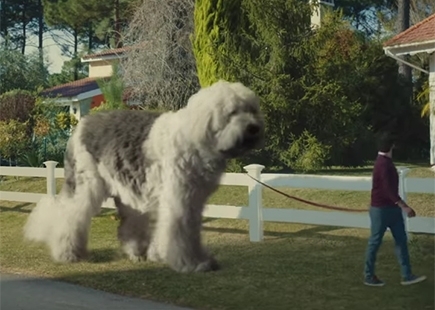
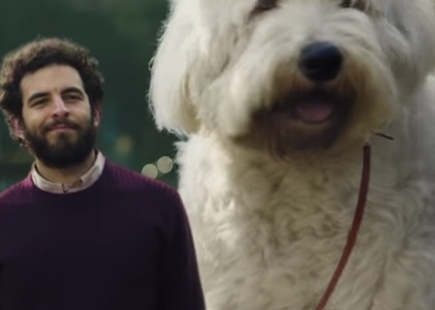
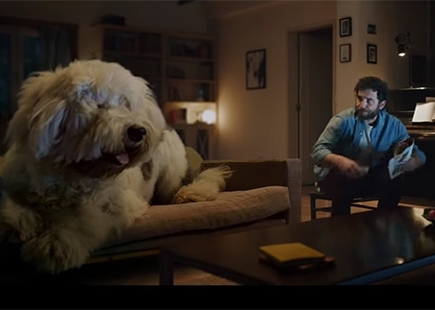
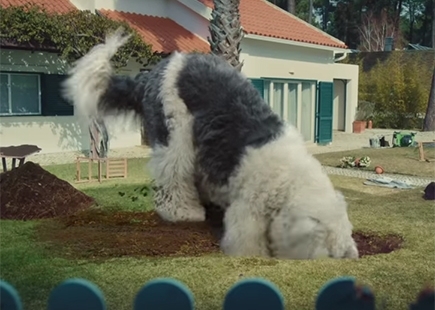
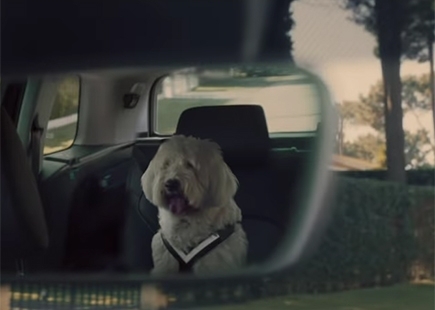
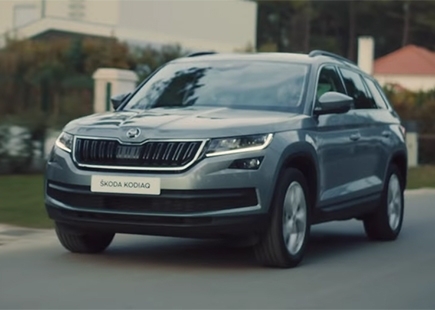
The Review
In summary, I just think the whole idea and its execution is trying too hard to make you love it and then share it.
In so doing it misses communicating the one key fact that might persuade you to buy a car with a rear seat belt for your dog… and that is you might die if you don’t.
Which takes me full circle back to my earlier reference to the COI and the advertising I helped to develop for a rear seat belt campaign in 1993. The script read ‘In a crash at 30 mph an adult back seat passenger without a seat belt is thrown forward with the force of three and a half tonnes, the weight of an elephant charging straight through the driver.’ Sound familiar?
But there the similarity ends. The 45-second COI film is shot in grainy black and white with a newsreader style v/o to give it a feeling of reportage. The rear passenger morphs briefly into an elephant as he is thrown through the front windscreen. The treatment was unforgiving and designed to shock.
I recognise that this was a road safety campaign and the Skoda campaign is designed to sell cars, so probably not best to show people dying in them. But I think that the creative treatment has sacrificed the communication of the core benefit of improved safety with a visual treatment that single-mindedly encourages us to fall in love with Doug the Dog instead of recognising that his real name should be Colin, the Canine Killer.
In Hindsight
One of the consequences of shooting moving content for use online as opposed to shooting a television ad is that the only constraint on its length is dwell time.
The strict 30-second time constraint of television commercials led to a rigorous discipline in writing and art direction which culminated in the emergence of Ridley Scott, Hugh Hudson and Adrian Lyne as feature film directors whose meticulous approach was new to Hollywood.
My sense is that online content has lost that discipline and that as an industry we have become lazy.
This intellectual laziness, combined with the opportunity to be self-indulgent is what produces films like Doug the Dog. Why tell a story in 20 seconds when you can have 70? My answer would be because in 20 seconds you are more likely, through focus and rigour to get the point across.
If you enjoyed this article, you can subscribe for free to our weekly email alert and receive a regular curation of the best creative campaigns by creatives themselves.
Published on:


